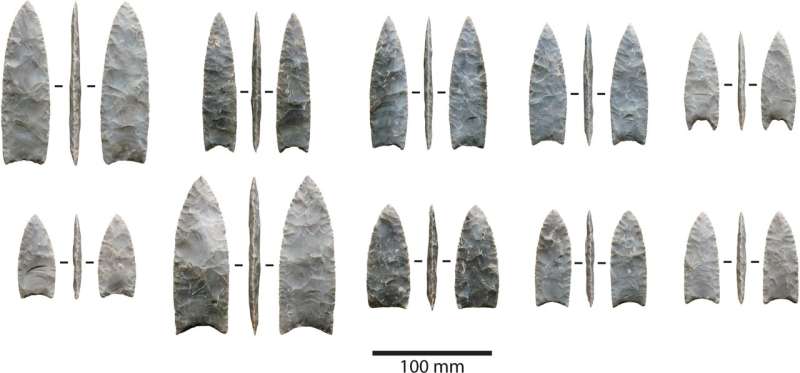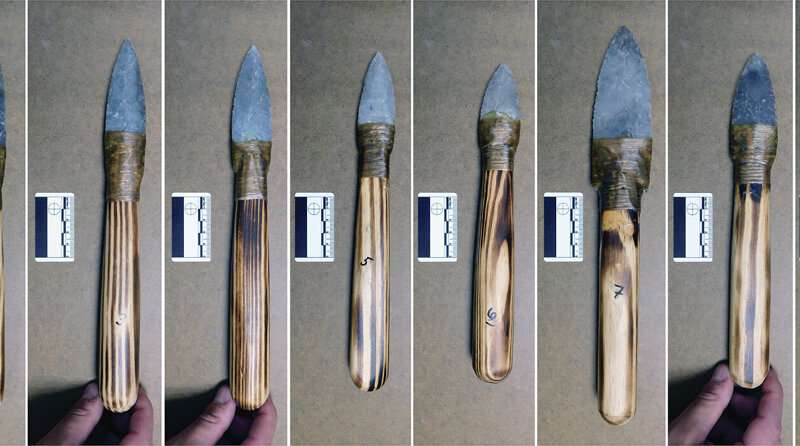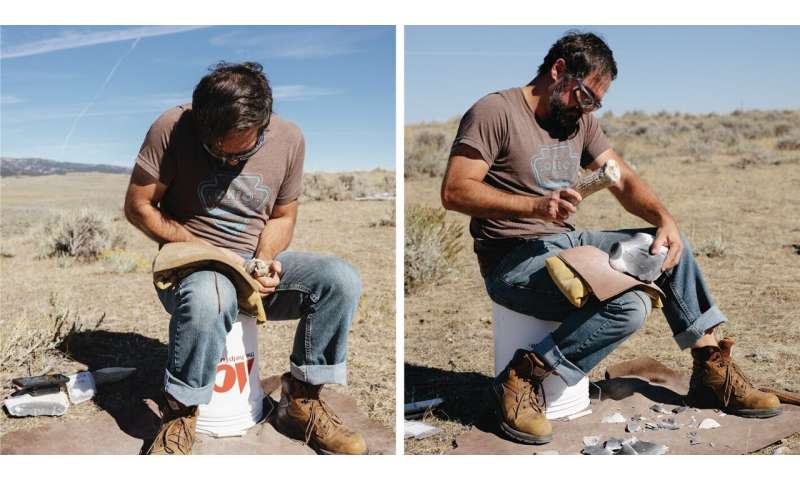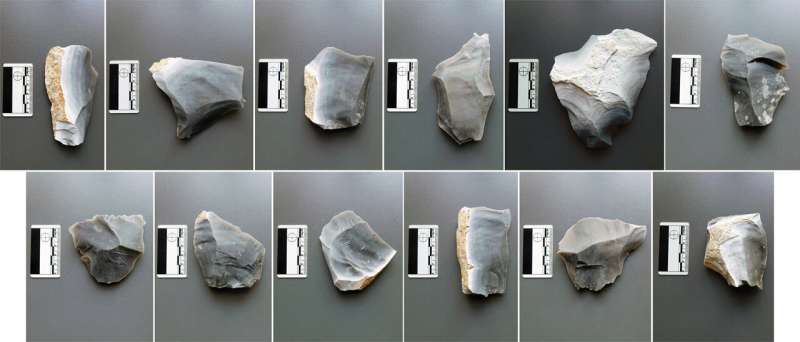April 9, 2024 report
This article has been reviewed according to Science X's editorial process and policies. Editors have highlighted the following attributes while ensuring the content's credibility:
fact-checked
peer-reviewed publication
trusted source
proofread
Clovis people may have also used Clovis points to butcher animals

A team of archaeologists and anthropologists from multiple institutions in the U.S. has found evidence that the Clovis, an early North American population, may have used so-called Clovis points for more than spearpoints—they may have also used them to cut up the animals they brought down.
In their study, published in the Journal of Archaeological Science: Reports, the researchers asked a group of hunters to use Clovis points to butcher a bison to find out how well they worked.
Prior research has shown that a Paleoamerican archaeological culture existed in parts of North America over the years 1,500 to 10,800 BCE. They are called the Clovis culture. The most striking evidence of their existence is Clovis points—uniquely fluted projectile points. It is believed that the points were used as both knives and spearheads. In this new effort, the researchers found evidence that the points were also used to butcher dead animals.
To find out if Clovis points could be used to cut up prey, the researchers recruited a group of five modern hunters affiliated with MeatEater, an outdoor lifestyle company—they hunt and eat what they kill and are well-versed in how to butcher large game.
-

Clovis fluted points hafted onto wooden handles by Michael Wilson. Credit: Metin I. Eren -

Metin I. Eren resharpening the stone tools with pressure flaking at the site in Montana (left). He also produced an expedient axe with soft hammer percussion (right). Credit: Seth Morris
The team was tasked with butchering a full-grown bison in a natural setting using two types of tools—one was a large, hand-held stone flake; the other was a Clovis point mounted on a wooden handle.
The research team found that the hunters were able to fully butcher the bison in three hours and 10 minutes. They also found that the Clovis point proved to be more efficient than the stone flake in that it allowed them to process the carcass more easily. They also found that the Clovis points were safer—none of the hunters cut themselves using them, whereas four of them did so with the stone flake.

One downside to using Clovis points for butchering, the researchers found, was that they needed to be sharpened quite often and they broke much more easily.
The research team concludes that the Clovis people used their points for many activities, including butchering the animals they killed.
More information: Metin I. Eren et al, Experimental bison butchery using replica hafted Clovis fluted points and large handheld flakes, Journal of Archaeological Science: Reports (2024). DOI: 10.1016/j.jasrep.2024.104480
Journal information: Journal of Archaeological Science
© 2024 Science X Network




















